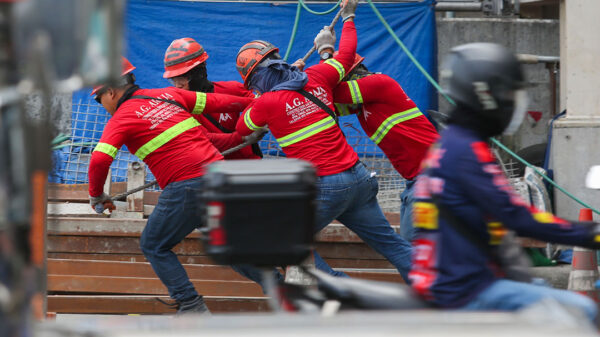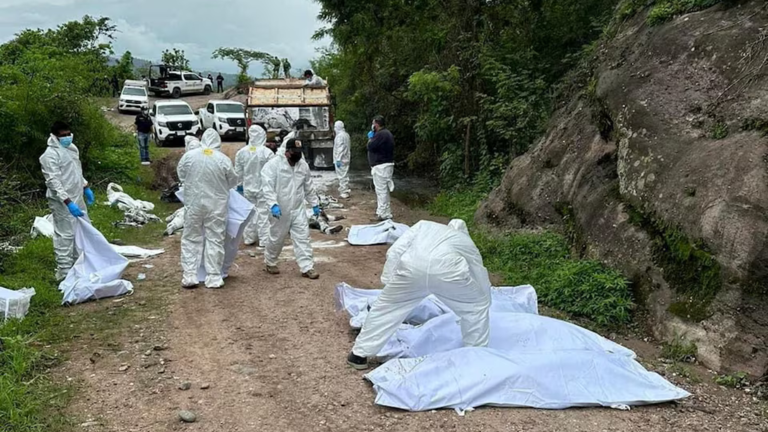The Discovery and Initial Findings
On Monday, authorities in the southern Mexican state of Chiapas, near the border with Guatemala, made a tragic discovery when they found at least 19 bodies in an abandoned truck. This alarming find was promptly reported by the state’s attorney general, sparking a swift and comprehensive investigation. The location of the discovery, close to the Guatemalan border, is known for its complex socio-political dynamics and has often been a hotspot for illicit activities.
Upon further examination, it was uncovered that five of the bodies bore gunshot wounds, indicating a violent altercation. Each of the deceased individuals was dressed in dark clothing and equipped with tactical vests containing ammunition. This detail suggests a level of preparedness typically associated with organized crime groups, hinting at the possibility that these individuals were involved in a violent confrontation with a rival faction or law enforcement.
The condition of the bodies and the presence of tactical gear point towards a meticulously planned operation. The fact that the truck was abandoned with such damning evidence inside raises questions about the events leading up to this grim discovery. Local authorities were quick to secure the scene, ensuring that all potential evidence was preserved for further analysis. Initial observations have led investigators to believe that this incident is intricately linked to the workings of organized crime networks in the region.
Early clues and evidence found at the scene, including the type of ammunition and the tactical gear, are being scrutinized to piece together the circumstances surrounding this tragic event. The involvement of organized crime is a strong lead, given the violent nature of the deaths and the strategic disposal of the bodies. As the investigation unfolds, authorities are hopeful that they will uncover more information to bring clarity to this tragic discovery and possibly identify those responsible for such a heinous act.
Cartel Violence and Human Trafficking: A Dangerous Intersection
Mexican President Andres Manuel Lopez Obrador has attributed the tragic discovery of 19 bodies in an abandoned truck in Chiapas to the brutal realities of cartel violence. This incident starkly highlights the perilous intersection of drug trafficking and human trafficking along this notorious route. Chiapas, a key transit point for migrants, has become a battleground for warring cartels, exacerbating the already dire situation for those seeking a better life.
President Lopez Obrador, during his daily press conference, underscored the involvement of two major cartels vying for control over the lucrative human trafficking and drug smuggling operations. He noted that some of the victims were migrants from Guatemala, emphasizing the complex and hazardous dynamics at play. The cartels’ ruthless competition not only endangers the lives of migrants but also destabilizes local communities, instilling fear and uncertainty among residents.
The President also addressed the government’s ongoing efforts to protect local residents from the violent repercussions of these criminal enterprises. However, the intricate web of cartel influence and corruption presents significant challenges. Local authorities often find themselves outmatched and outgunned, struggling to maintain order in the face of such pervasive criminal activity.
Chiapas natives offer varied perspectives on the situation, reflecting the deep-rooted impact of cartel violence on their daily lives. Many locals express frustration with the government’s perceived inability to curb the violence and protect their communities. Some residents highlight the economic hardships that drive individuals into the clutches of human traffickers, while others call for more robust international cooperation to address the root causes of migration and cartel dominance.
The grim reality in Chiapas serves as a poignant reminder of the deadly consequences when drug trafficking and human trafficking intersect. The tragic loss of life underscores the urgent need for comprehensive strategies that address both the immediate and underlying issues fueling this crisis. Only through coordinated efforts can the cycle of violence and exploitation be broken, paving the way for safer and more stable communities.


































